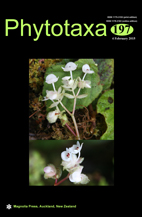Abstract
All available phylogenetic evidence indicates that the rattan genus Calamus, the largest of all palm (Arecaceae) genera, is non-monophyletic and that the four remaining genera of subtribe Calaminae (Calameae: Calamoideae), Ceratolobus, Daemonorops, Pogonotium and Retispatha, are nested within it. This issue has not yet been adequately addressed in palm classifications, with recent authors preferring to wait for further phylogenetic evidence before revising the limits of the genera. Here, an alternative solution is proposed that is both pragmatic and phylogenetically robust. An expanded Calamus is recognised into which Ceratolobus, Daemonorops, Pogonotium and Retispatha are subsumed. This broad generic concept, which includes ca. 520 species, has practical advantages as it is more clearly defined by morphological and anatomical characters, and resolves potential biases introduced to recent eco-evolutionary research on palms by the non-monophyly of critical genera. Future phylogenetic research may yet provide an alternative means of delimiting these genera, but the broad sense Calamus proposed here is a justifiable alternative that can be adopted immediately. Nomenclatural synopses transferring currently accepted species of Ceratolobus, Daemonorops and Pogonotium to Calamus are provided, including 70 new combinations and 12 replacement names.

